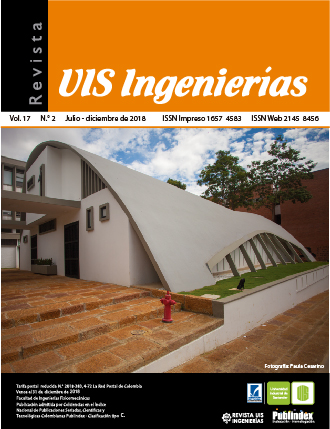Protein structure prediction using classification techniques
Published 2018-06-19
Keywords
- Bioinformatics,
- classifiers,
- structural prediction,
- proteins,
- SCOP
How to Cite
Abstract
In this paper, a new protein structure prediction method is presented. Unlike current methods, this work introduces an approach based on supervised classification algorithms during the protein structure prediction. The accuracy of the proposed method was compared to traditional methods such as LFF (Local Feature Frequency) when using the Scop 2,05 dataset. The results indicate that there is a significant difference between these two methods. The proposed method reaches accuracy values of 92.13 %, 96.32 %, 93.05 %, and 76.35 %, at class, fold, superfamily, and family levels, respectively, and the LFF method reaches accuracy values of 85.90 %, 90.54 %, 79.85 % and 67.38 %, for the same structural levels.
Downloads
References
I. Choi, J. Kwon, S. Kim. “Local Feature Frequency Profile: A Method to Measure Structural Similarity in Proteins.” Proceedings of the National Academy of Sciences of the United States of America (PNAS), vol. 101, no. 11, pp. 3797-3802, 2004.
S. Gupta, J. Stamatoyannopoulos, T. Bailey, W. Stafford. “Quantifying similarity between motifs. Genome Biology”, vol. 8, pg. R24, 2007.
A. Narunsky, S. Nepomnyachiy, H. Ashkenazy, R. Kolodny, N. Ben-Tal. “ConTemplate Suggests Possible Alternative Conformations for a Query Protein of Known Structure.” Structure Volume 23, Issue 11, pp. 2162–2170, 2015.
E. Zotenko, D. O'Leary, T. Przytycka. “Secondary structure spatial conformation footprint: a novel method for fast protein structure comparison and classification.“ BMC Structural Biology, pp. 1-12, 2006.
X. Cui, S. Cheng, L. He, M. Li. “Fingerprinting protein structures effectively and efficiently.” Bioinformatics 30 (7), pp. 949–955, 2014.
J. Moult, K. Fidelis, A. Kryshtafovych, B. Rost, T. Hubbard, A. Tramontano. “Critical assessment of methods of protein structure prediction Round VII.” Proteins; 69(Suppl 8):3–9, 2007.
A. Kryshtafovych, O. Krysko, P. Daniluk, Z. Dmytriv, K. Fidelis. “Protein structure prediction center in CASP8.” Proteins;77(Suppl 9):5–9, 2009.
E. Zotenko, R. Dogan, J. Wilbur, “Structural footprinting in protein structure comparison: the impact.” BMC Structural Biology, pp. 1-14, 2007.
J. Moult, K. Fidelis, A. Kryshtafovych, T. Schewede. “Critical assessment of methods of protein structure prediction: Progress and new directions in round XI.” Proteins Volume 84, Issue S1, pp. 4–14, 2016.
O. Bedoya, E. Satizábal, “NN-PRED: Un nuevo programa para la predicción de la estructura secundaria de la proteína usando redes neuronales,” Rev. UIS Ing., vol. 12, no. 1, pp. 51-59, 2013.
P. Rogen, B. Fain. “Automatic classification of protein structure by using Gauss integrals. “ Multidisciplinary journal covering the biological, physical, and social sciences, pp. 119-124, 2003.
L. Kaufman, P. Rousseeuw. “Partitioning Around Medoids (Program PAM).” En L. Kaufman, & P. Rousseeuw, Finding Groups in Data: An Introduction to Cluster Analysis. Hoboken, New Jersey, USA, 2008.
I. Witten, F. Eibe, M. Hall, C. Jal. “Data mining. Practical machine learning tools and techniques.” Cambridge. MA: Morgan Kaufmann, 2017.
A. Andreeva, D. Howorth, C. Chothia, E. Kulesha, A. Murzin. “SCOP2 prototype: a new approach to protein structure mining.” Nucleic Acids Research, vol. 42, no. 18, pp. 310-314, 2014.

